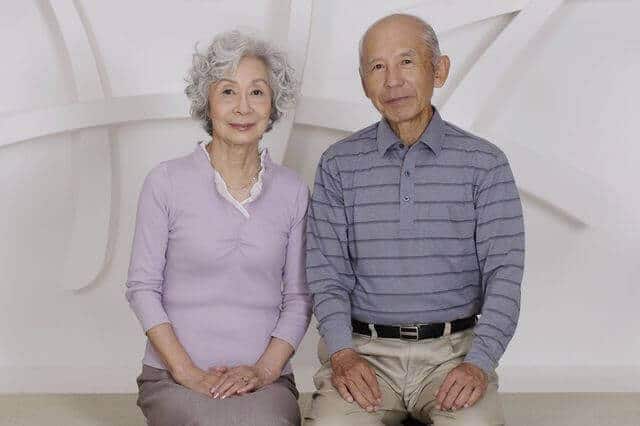Nearly 1 in 4 Japanese-Americans are 65 and older — nearly twice the proportion of seniors in the overall U.S. population. The facts that they are likelier to live longer than other Americans and are healthier when they age make Japanese-Americans an important subject of research by health policy experts — and could provide clues about how all Americans can age, according to a new study by the UCLA Center for Health Policy Research.
Using California Health Interview Survey data from 2003 to 2012, the study found that elderly Japanese-Americans had lower risks for nine of 15 health indicators than other Asian and other racial and ethnic groups in California. Older Japanese-Americans, however, did have higher rates of arthritis and hypertension than seniors in other racial and ethnic groups.
“Japanese-Americans provide a window into our future,” said Ying-Ying Meng, lead author of the study and co-director of the center’s Chronic Disease Program. “They show us one vision of how our nation can age and can help us prepare for the enormous generational shift ahead.”
The report, which was funded by Keiro Senior HealthCare, examines three categories of Japanese in California: Those who identify as being “only” Japanese — typically with parents who both were Japanese; those who identify as being mixed-race; and those who identified as being Japanese in some way.
Among the findings:
Japanese-only
- 2 in 5 have hypertension, compared with 1 in 5 Asians in California overall and 1 in 3 Californians.
- 2 in 5 have arthritis, compared with 1 in 5 or fewer among Chinese, Korean and South Asians in the state.
- About 9 percent have diabetes — higher than the 7 percent target set for all Californians by Let’s Get Healthy California, a state-backed initiative that sets health goals, but comparable to the prevalence among all California adults and Asians in the state overall.
Mixed-race
- 1 in 4 eat fast food four or more times a week, compared to 1 in 10 Japanese-only.
- About 8 percent have hypertension — significantly lower than the figure among the Japanese-only cohort (39 percent). The study’s authors say the disparity may be a result of the multiracial group being younger overall.
Any Japanese identification
- About 1 in 3 reported binge drinking — significantly more than those in Chinese or Vietnamese communities (both fewer than 1 in 5).
- About 9 percent have diabetes, the same as among the Japanese-only group.
- About 14 percent are obese, nearly double the 6 percent rate among the Chinese community but close to the Let’s Get Healthy California goal of 11 percent, and much lower than the rate for Latinos (30 percent) and African-Americans (35 percent).
- They are much less likely to self-report fair or poor overall health than all other Asian groups in California, except for South Asians.
- Rates of serious psychological distress are low, although the authors say Japanese-American families might not report mental health needs because of stigma.
- Japanese seniors had a much lower prevalence of falls, about 8 percent, than Latinos (15 percent) and whites (14 percent).
Japanese-only residents, in large part the older generation, have some health behaviors and health outcomes that outshine their racially mixed grandchildren.
“In diet, for instance, the older Japanese population and new immigrants from Japan eat traditional foods — such as fish, miso soup and produce — while the younger, racially mixed generation is more fueled by fast food,” Meng said.
About 20 percent of California’s Japanese population identifies as multiracial, according to CHIS data from 2007 to 2012. Among Japanese-Americans ages 18 to 34, about 57 percent identify as multiracial, and only 14 percent identify as Japanese-only.
Tailored community outreach needed
To address health issues such as binge drinking and hypertension among California’s Japanese-Americans, the authors suggest culturally appropriate interventions tailored to subgroups, community-based prevention programs in non–health care settings, and more study of Japanese health and health behaviors.
“The approaching wave of aging baby boomers will place more demands on families and communities and significantly affect public health, social services and health care systems across the country,” said Dianne Kujubu Belli, chief administrative officer of Keiro Senior HealthCare. “Not only does this report guide Keiro and other Japanese-serving organizations to establish priorities in programming, but researchers and policymakers can study Japanese-Americans’ better health and take steps to promote healthy lifestyles and dietary habits for all future seniors.”


